






| Leptorchestes berolinensis (C. L. Koch, 1846) |







|
|
Scientific name: Leptorchestes berolinensis (C. L. Koch, 1846) Common name: French name: Order: Araneae Family: Salticidae Size: 5 to 6.5 mm for males and 5.75 to 7 mm for females. Biotope: Warm and sunny places, on heaps of dead wood, on trunks, on fences, on the walls of houses. Web: No web. Observation period: Adults are observed in spring and summer. Geographic area: Europe except the British Isles and Scandinavia, Turkey, and further east to Turkmenistan. |
Leptorchestes berolinensis is one of the myrmecomorphic spiders, that is to say, which imitate ants. It moves by placing and shaking its two front legs forwards in such a way that we believe we see antennae. It shows a completely black cephalothorax followed by a stalked abdomen with a median constriction. The front part of the abdomen is reddish brown on females and reddish brown to dark brown on males. The rear part is blackish. At the narrowing, there is a yellow line on the top and white marks on the sides. Coxas of legs III are black, those of the other legs are light coloured. The other genera of myrmecomorphic spiders found in France, Myrmarachne and Synageles, all have light coloured coxas. The second half of the cephalothorax of Myrmarachne, slightly depressed compared to the first half, is reddish brown in colour. Two other species of the Leptorchestes genus are found in the south of France, Leptorchestes mutilloides and Leptorchestes peresi. They can be recognized by their completely blackish abdomen, while the first half is reddish brown on female Leptorchestes berolinensis and on some males, but can also be dark brown on other males. This colour criterion can therefore be difficult to apply to the latter. In addition, Leptorchestes peresi has relatively dark legs with in particular black markings on the dorsal parts of legs I and II. Leptorchestes berolinensis has yellowish legs II with a black pro lateral mark but no dorsal mark. The back of the cephalothorax is dark brown on Leptorchestes mutilloides while it is black on Leptorchestes berolinensis. |
| [To know more about the Leptorchestes berolinensis] [Next picture] [Top] |
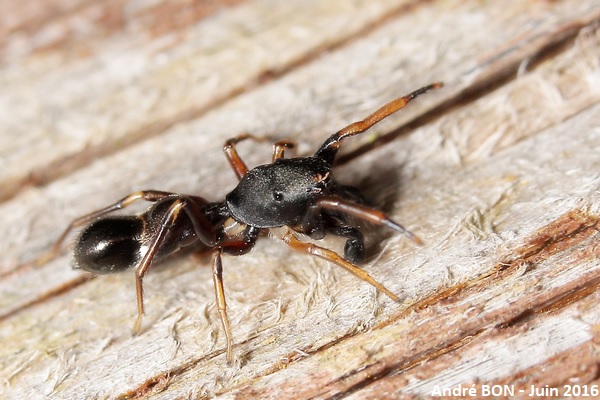
|
I saw a male and a female on an old wooden door. It was impossible for me to take a picture of both individuals, so I concentrated on the male. This view shows the black coxa of legs III, which confirms the Leptorchestes genus. The first half of the abdomen is rather dark but leg II, light yellowish without dark dorsal mark, and the totally black cephalothorax indicate Leptorchestes berolinensis. |
| [To know more about the Leptorchestes berolinensis] [Next picture] [Previous picture] [Top] |
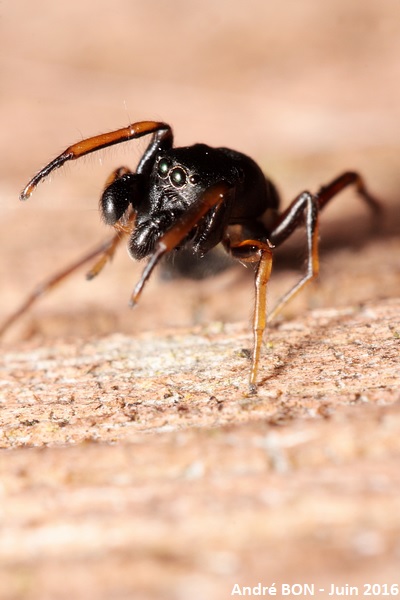
|
Depending on my photographic skills and the equipment used, I can only take acceptable photos of these tiny subjects if they are motionless for at least ten seconds. This Leptorchestes berolinensis was very mobile and I had to prevent its escape several times by obstacles in the hope that it paused. |
| [To know more about the Leptorchestes berolinensis] [Next picture] [Previous picture] [Top] |
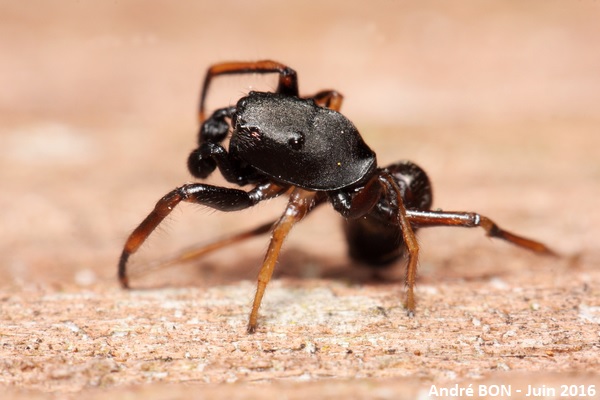
|
As with all Salticidae we generally try to take front view pictures but we don't always succeed. |
| [To know more about the Leptorchestes berolinensis] [Next picture] [Previous picture] [Top] |
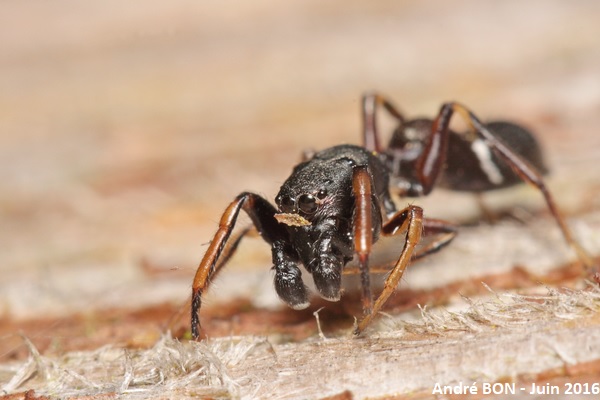
|
The tips of the pedipalps are white. I read that it could also be a criterion to identify Leptorchestes berolinensis among other species of the same genus but I did not find confirmation. |
| [To know more about the Leptorchestes berolinensis] [Next picture] [Previous picture] [Top] |
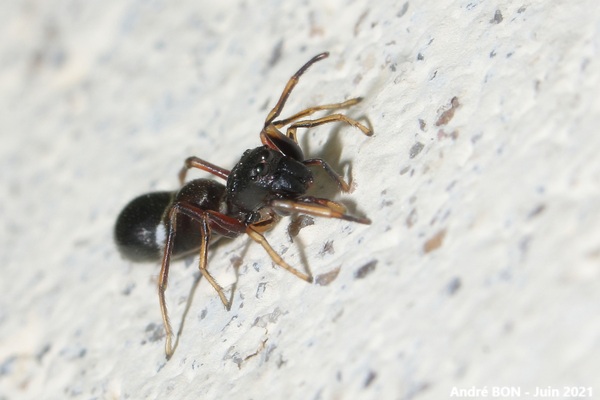
|
Here is another male. |
| [To know more about the Leptorchestes berolinensis] [Next picture] [Previous picture] [Top] |
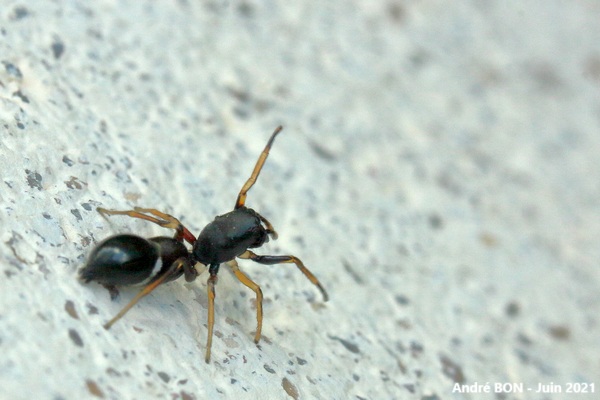
|
This view clearly shows the black coxa of legs III and the absence of dark dorsal marking on legs II. |
| [To know more about the Leptorchestes berolinensis] [Previous picture] [Top] |
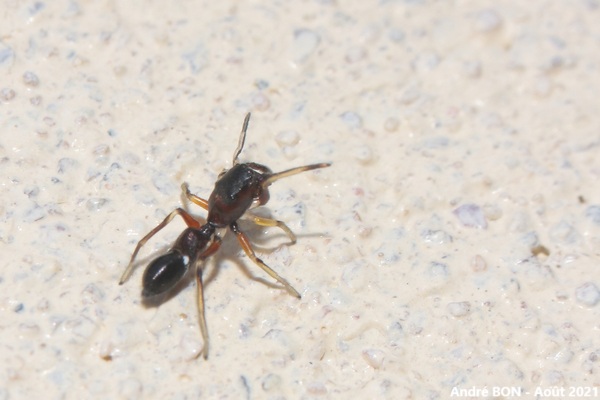
|
This little jumping spider really looks like an ant if you don't look very closely. |